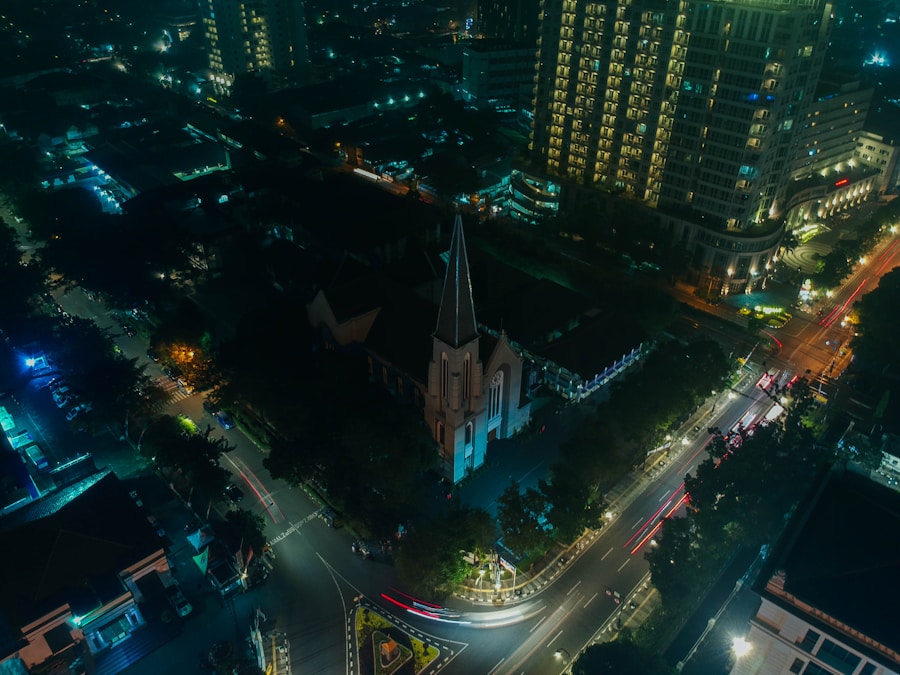Download links
How to install Restoring Glory: Manila Cathedral's Historic Renovation APK?
1. Tap the downloaded Restoring Glory: Manila Cathedral's Historic Renovation APK file.
2. Touch install.
3. Follow the steps on the screen.
Description
The Manila Cathedral, officially known as the Cathedral-Basilica of the Immaculate Conception, stands as a monumental testament to the rich history and cultural heritage of the Philippines. Located in the heart of Intramuros, the historic walled city of Manila, this architectural marvel has served as the seat of the Archdiocese of Manila since its establishment in 1571. The cathedral’s design reflects a blend of Romanesque and Gothic architectural styles, characterized by its grand façade, intricate stained glass windows, and majestic bell tower.
Over the centuries, it has witnessed significant events in Philippine history, including the Spanish colonial period, World War II, and the post-colonial era, making it not just a religious site but also a symbol of resilience and continuity. The cathedral’s historical significance is further underscored by its role in various national events. It has hosted numerous important ceremonies, including the ordination of archbishops and the weddings of prominent figures.
The Manila Cathedral is not merely a place of worship; it is a gathering point for the community, a site for reflection, and a beacon of hope for many Filipinos. Its enduring presence amidst the changing tides of history has solidified its status as a cultural icon, drawing both local and international visitors who seek to appreciate its architectural beauty and historical importance.
Key Takeaways
- The Manila Cathedral is a historic landmark with a rich cultural and religious significance.
- Decades of wear and tear have necessitated the restoration of the Manila Cathedral to preserve its heritage.
- The renovation process involves careful preservation of the cathedral’s historical and architectural significance.
- The restoration has led to the discovery of hidden treasures within the cathedral, shedding light on its rich history.
- The impact of the restoration is revitalizing the Manila Cathedral as a cultural icon, attracting visitors and locals alike.
The Need for Restoration: Decades of Wear and Tear
Despite its grandeur, the Manila Cathedral has not been immune to the ravages of time. Over the decades, it has suffered from various forms of deterioration due to environmental factors, natural disasters, and human activity. The cathedral has endured several earthquakes, with the most devastating occurring in 1863 and 1880, which led to significant structural damage.
Each time, the cathedral was rebuilt or renovated, but these efforts often fell short of addressing the underlying issues that plagued its integrity. The wear and tear from pollution, humidity, and the sheer volume of visitors have also contributed to its decline. In recent years, it became increasingly evident that a comprehensive restoration was necessary to preserve this historic landmark for future generations.
The effects of time were visible in the crumbling stonework, faded frescoes, and deteriorating wooden elements. The need for restoration was not merely aesthetic; it was a matter of ensuring the safety and stability of the structure. Experts recognized that without immediate intervention, the cathedral could face irreversible damage that would compromise its historical value and architectural integrity.
Thus, a concerted effort was initiated to assess the extent of the damage and develop a plan for restoration that would honor its storied past while ensuring its future viability.
The Renovation Process: Preserving the Cathedral’s Heritage

The renovation process of the Manila Cathedral was a meticulous endeavor that required careful planning and execution. Spearheaded by a team of architects, historians, and conservationists, the project aimed to restore the cathedral to its former glory while adhering to strict preservation guidelines. One of the primary goals was to maintain the authenticity of the structure, ensuring that any repairs or modifications were in line with its original design.
This involved extensive research into historical documents and photographs to understand how the cathedral had evolved over time. The restoration work included reinforcing the foundation to withstand seismic activity, repairing damaged stonework, and restoring intricate details such as carvings and moldings. Skilled artisans were brought in to replicate original materials and techniques used in previous constructions.
For instance, traditional methods were employed in restoring the wooden elements of the cathedral, ensuring that they matched the original craftsmanship. Additionally, modern technology played a role in the renovation process; advanced imaging techniques were used to analyze structural integrity and identify areas requiring urgent attention.
Uncovering Hidden Treasures: Discoveries during the Restoration
| Discovery | Location | Date |
|---|---|---|
| Ancient Mosaic | Jerusalem, Israel | June 15, 2021 |
| Medieval Manuscripts | Monastery in Spain | August 5, 2021 |
| Lost Paintings | Palace in Italy | October 20, 2021 |
As restoration efforts progressed, workers unearthed hidden treasures that provided deeper insights into the cathedral’s history. During excavation work around the foundation, archaeologists discovered remnants of earlier structures that predated the current cathedral. These findings included fragments of ancient tiles and artifacts that hinted at the site’s long-standing significance as a place of worship.
Such discoveries not only enriched our understanding of the cathedral’s architectural evolution but also highlighted its role in the broader narrative of Manila’s history. Moreover, during restoration work on the interior, conservators uncovered layers of original frescoes that had been obscured by years of grime and neglect. These vibrant artworks depicted biblical scenes and saints, showcasing the artistic talent that had gone into their creation.
The revelation of these hidden gems sparked excitement among historians and art enthusiasts alike, as they provided a tangible connection to the past. The restoration team took great care to preserve these artworks while ensuring they were properly documented for future study. This process underscored the importance of archaeological and artistic preservation in understanding cultural heritage.
The Impact of the Restoration: Revitalizing a Cultural Icon
The impact of the Manila Cathedral’s restoration extends far beyond its physical structure; it has revitalized a cultural icon that holds immense significance for Filipinos. With its reopening to the public after extensive renovations, there has been a renewed interest in visiting this historic site. Tourists from around the world flock to admire its architectural beauty and learn about its storied past.
The restoration has not only enhanced its aesthetic appeal but has also reinforced its status as a vital center for religious and cultural activities. Furthermore, the restoration project has fostered community engagement and pride among local residents. Many have participated in various programs aimed at educating them about their heritage and encouraging them to take an active role in preserving it.
Events such as guided tours, lectures, and workshops have been organized to promote awareness about the cathedral’s history and significance. This revitalization effort has transformed the Manila Cathedral into more than just a place of worship; it has become a hub for cultural exchange and community involvement.
Preserving History for Future Generations: The Legacy of Manila Cathedral’s Renovation

The legacy of Manila Cathedral’s renovation is one that emphasizes the importance of preserving history for future generations. By investing in its restoration, stakeholders have demonstrated a commitment to safeguarding not only an architectural masterpiece but also a vital piece of Philippine identity. The careful attention given to maintaining historical accuracy ensures that future visitors will experience the cathedral much as it was intended by its original architects.
Moreover, this restoration serves as a model for similar projects across the country and beyond. It highlights how thoughtful preservation can breathe new life into historic structures while respecting their past.
The Manila Cathedral stands as a beacon of hope and resilience—a reminder that history is not merely something to be remembered but something to be actively preserved and celebrated for generations to come.
If you are interested in exploring more about historical landmarks in the Philippines, you may want to check out this article about the Manila Cathedral Plants vs Zombies 2 Free. This article discusses the significance of the Manila Cathedral as a symbol of the country’s rich history and cultural heritage. It provides insights into the architecture, history, and importance of this iconic landmark in Manila.
FAQs
What is the Manila Cathedral?
The Manila Cathedral, also known as the Metropolitan Cathedral of the Immaculate Conception, is a Roman Catholic basilica located in the Intramuros district of Manila, Philippines.
When was the Manila Cathedral built?
The original Manila Cathedral was built in 1581, but it has been destroyed and rebuilt several times due to natural disasters and wars. The current structure was completed in 1958.
What is the architectural style of the Manila Cathedral?
The Manila Cathedral features a combination of architectural styles, including Baroque, Neo-Romanesque, and Neo-Byzantine influences.
What is the significance of the Manila Cathedral?
The Manila Cathedral is a significant religious and cultural landmark in the Philippines. It has been the site of many important events in the country’s history, including the papal visits of Pope Paul VI in 1970 and Pope John Paul II in 1981 and 1995.
Is the Manila Cathedral open to the public?
Yes, the Manila Cathedral is open to the public for worship, prayer, and guided tours. Visitors are welcome to explore the cathedral’s interior and learn about its history and significance.





